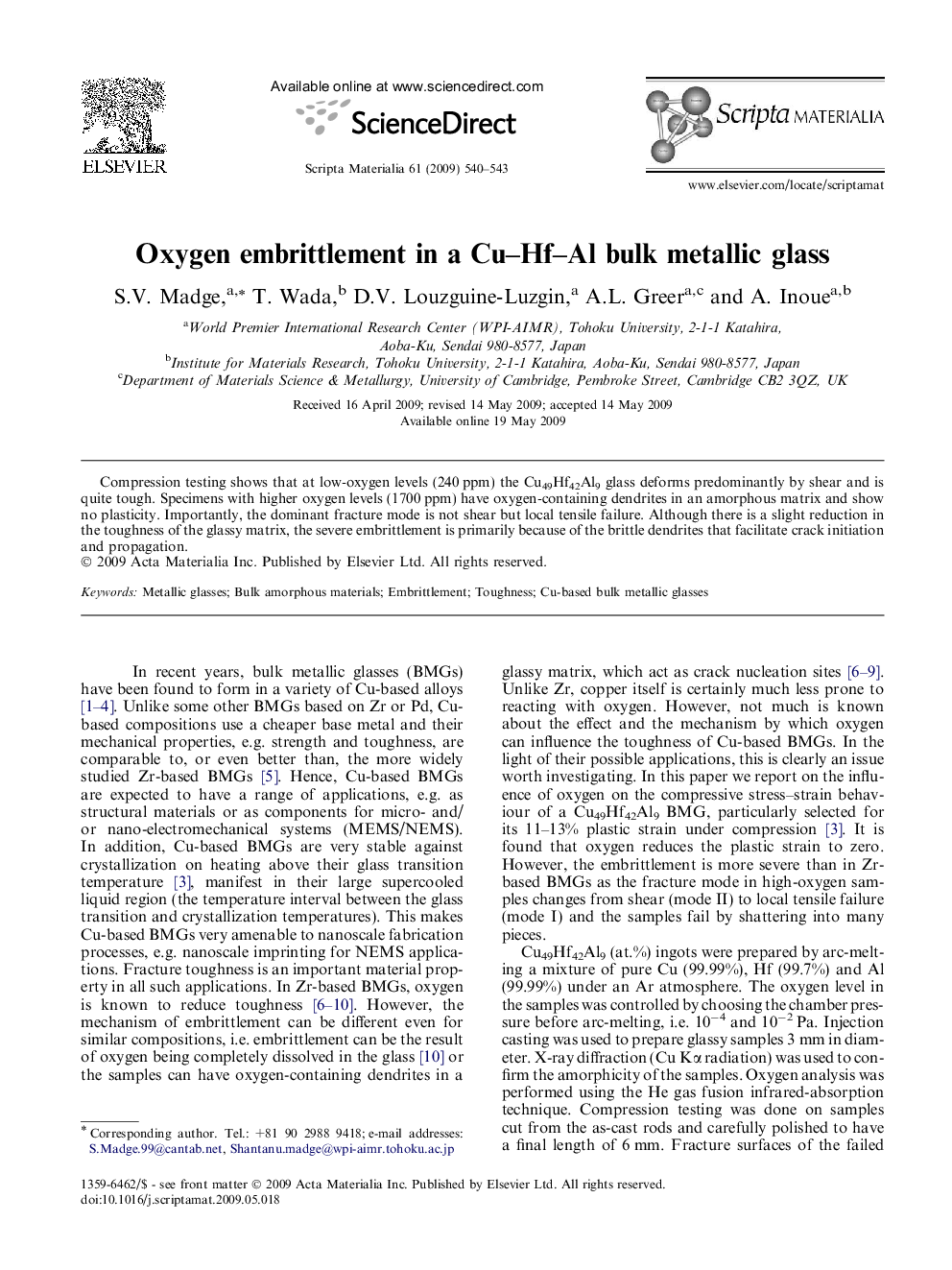| Article ID | Journal | Published Year | Pages | File Type |
|---|---|---|---|---|
| 1501372 | Scripta Materialia | 2009 | 4 Pages |
Abstract
Compression testing shows that at low-oxygen levels (240 ppm) the Cu49Hf42Al9 glass deforms predominantly by shear and is quite tough. Specimens with higher oxygen levels (1700 ppm) have oxygen-containing dendrites in an amorphous matrix and show no plasticity. Importantly, the dominant fracture mode is not shear but local tensile failure. Although there is a slight reduction in the toughness of the glassy matrix, the severe embrittlement is primarily because of the brittle dendrites that facilitate crack initiation and propagation.
Related Topics
Physical Sciences and Engineering
Materials Science
Ceramics and Composites
Authors
S.V. Madge, T. Wada, D.V. Louzguine-Luzgin, A.L. Greer, A. Inoue,
